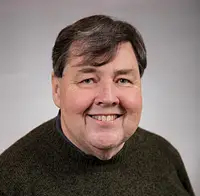Staying active in recovery can help people stay sober. Learning to enjoy the things we used to enjoy–before drugs and alcohol took over–takes time. In treatment, it helps to have a mix of quality therapies to gain the best healing and addiction recovery. Dance and addiction therapy services prove useful for people going through these significant life changes of putting substance use behind for a better life ahead. You can benefit from this therapy, too.
Dance comes naturally to all of us. As babies, we moved in rhythm to the world around us, enjoying our “dance” and reaction to sounds. As addiction sets in and even into early sobriety, we stop connecting with our bodies, minds, and emotions. However, dance helps you return to a better place, one with greater openness for fuller healing.
Dance Therapy for Addiction Recovery
A dance therapy program in your residential treatment program helps you recover from mental illness and your addiction itself. You have a story to tell, but do not connect with others as you did before. You also need some positive en3ergy and hope for a better future. Dance therapy helps you build connections, positive energy, and a healthy outlook.
Dance works well because your body does not often lie about your well-being. If you feel depressed, lonely, or angry, your words could discount these problems. You tell people you are fine. However, your body reveals the truth.
Dance therapy uses your body’s natural honesty to connect with others, such as your therapist or counselor. You also find yourself more engaged in your recovery and treatment. You use greater honesty after letting go of the little “white lies” you tell each day, those of being fine despite the problems you face.
 Getting Started with Dance in Addiction Rehab
Getting Started with Dance in Addiction Rehab
Your dance therapy program feels awkward at first. The movements used as part of therapeutic dance are not like any you used before. Dance outside of rehab is an art form. However, dance in your rehab program is raw, unrehearsed, and unusual.
While the term “dance” describes the therapy, this work actually consists of movements and connections. You make your own moves to express your feelings, thoughts, and struggles.
Some group dance therapy program sessions involve holding a string or corner of a scarf to connect yourself to another person. The other person holds the other end of the string or scarf. Both people work together to move in harmony without losing their grasp on the connection.
Some sessions involve individual movements without connecting to another person. Other therapy sessions use instruments, props, or costumes to help you connect with music or the dance itself.
Dance works best as therapy when you and your therapist or counselor develop goals for your sessions. With each passing session of dance therapy, you enjoy it more and see its benefits. This makes the process feel less awkward. At the end of your appointments, your therapist or counselor helps you understand the advances you made through your dance activity.
A Mix of Therapies in Portland, Oregon
At Crestview Recovery, your individualized treatment plan includes a mix of quality therapies. This mix ensures that you tap into more of yourself, your needs, and deeply rooted feelings in rehab. It also helps you gain fuller recovery from your addiction and co-occurring conditions.
Therapies and programs of Crestview Recovery include:
- Inpatient, PHP, IOP, and outpatient rehab
- Extended care and aftercare
- Individual therapy and group therapy
- Music and dance therapies
- Dual diagnosis treatment
- Trauma therapy with therapists or counselors
Dance therapy helps you learn more about your own needs and experiences, as well as how those affect your daily life. So, call Crestview Recovery now at 866.262.0531 to learn more about including this therapy in your individualized treatment plan.

Since 2016, Dr. Merle Williamson, a graduate of Oregon Health Sciences University, has been the Medical Director at Crestview Recovery, bringing a rich background in addiction medicine from his time at Hazelden Treatment Center. He oversees outpatient drug and alcohol treatments, providing medical care, setting policies, detox protocols, and quality assurance measures. Before specializing in addiction medicine, he spent 25 years in anesthesiology, serving as Chair of Hospital Pharmacy and Therapeutics Committee and Chief of Anesthesia at Kaiser Permanente. This experience gives him a unique perspective on treating prescription drug addiction.
